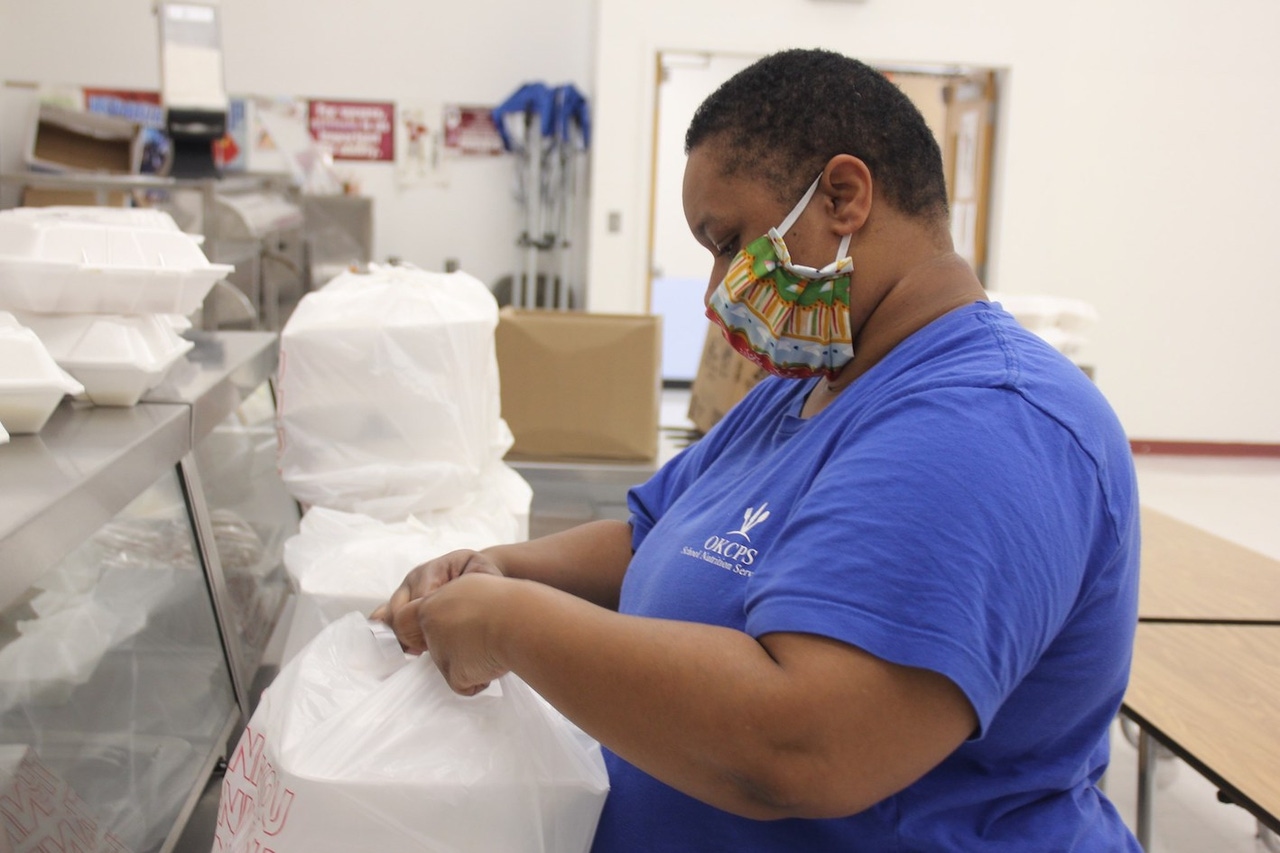Packaging remains a hurdle as operators plan for the futurePackaging remains a hurdle as operators plan for the future
COVID slowed down many teams’ sustainability efforts, and for some, a clear solution remains under wraps.
April 27, 2021

Among the challenges COVID-19 threw at foodservice operations, packaging was a big one.
The sudden switch to takeout created huge packaging demand, and the materials sourced had to serve multiple functions: retain temperatures, hold and protect food, look good and be inexpensive.
Unsurprisingly, sustainability took a backseat.
But now, as a sense of normalcy returns, operators are thinking long-term—and sustainability’s a huge factor, particularly on college campuses, where consumers are especially vocal about environmental issues.
Andrew Watling, associate director of dining services at Washington University in St. Louis, Mo., says the biggest issue initially was simply getting products. Finding containers that could hold food well was the next hurdle, “and unfortunately, your compostable to-go containers don’t hold up to that task,” he says.
As a result, the university switched to thicker plastic containers with a black bottom and clear top. “That’s done amazing things to food quality, but it’s terrible from a sustainability standpoint,” he says.
So what’s ahead?
When it comes to earth-friendlier options, packaging made from natural materials like mushrooms and seaweed is gaining attention alongside compostable products and reusables.
Watling thinks reusable to-go boxes are the long-term solution, though he admits that getting them returned is a challenge. He’s already kicked off a reusables program, and to encourage responsibility, plans to have students take a pledge and learn about reusables before they join.
Since students choose to opt in, “our hope is it’s going to only be the students who are interested in and invested in the program who will do it,” he says.
Watling purchases the containers, which have the school logo and messaging printed on them, through his local equipment distributor. “It only takes nine to 10 uses for each container before it becomes financially beneficial,” Watling says. “It also makes environmental sense.”
He’s hoping to keep the program free to join, though is considering a small charge, somewhere around $5.
Other considerations
At Boston College, a Green2Go reusables program started before the pandemic and has been marketed as a better option throughout COVID, says Cal Brokamp, manager of procurement and vendor relations.
Students pay a non-refundable $9 and receive a three-compartment hinged container. To get the word out, the university ran a marketing campaign driven by its sustainability interns, which included signage as well as mentions in student newsletters and on social media.
Around 200 students purchased the containers this semester, and another 100 in 2020, he says. Overall, around 30 are used daily.

Reusable containers at the University of Pittsburgh/photo courtesy of Pitt Eats
The Mayo Clinic in Rochester, Minn., has been thinking about sustainable packaging since before COVID started and completely eliminated Styrofoam as of Jan. 1, 2021. While the pandemic slowed progress, “it never detoured us from moving forward,” says Brian Smith, associate director of foodservices for Morrison Health Care, which oversees dining there.
A big push right now is reusable containers, but that comes with challenges—and the biggest is changing customers’ habits away from disposables, says Amanda Holloway, director of Mayo Clinic’s office of sustainability.
Other obstacles include transporting the reusables, encouraging their return, keeping drop-off stations neat and tidy, and supplying increased labor for dishwashing. Still, the hospital’s foodservice department is moving ahead.
“We have a subgroup of very vocal individuals who are very passionate environmentalists,” Holloway says. “But there’s more widespread interest now, and we’re all hearing more about climate change and the impacts.”
Cost concerns
K-12 schools have also had rely on disposable packaging during the pandemic. However, tight budgets have meant that sustainability isn’t under consideration for many in that segment.
After switching to curbside pickup, Oklahoma City Public Schools now serves all food in clamshells or foam containers, even with students back in schools four days a week. Some suppers, such as sandwiches, are simply offered in plastic wrap, and everything goes into sacks to make it easy for the children.
The district dishes up breakfast, lunch, supper and a snack, and serves around 64,000 meals every day, which means a lot of garbage, but that isn’t the focus, says Director of School Nutrition Services Shonia Hall. “Our goal is to feed the kids so they have full bellies when they are in the classroom and are ready to learn.”
Paper goods costs are up significantly, she adds. “We’re always in mind of being good fiscal stewards, but we don’t want to cut the quality of our food so this is what we have to do.”
To help offset those costs, Hall has applied for every grant she can. “I try to hop on those opportunities because that helps with the budget,” she says.
Oakland Unified School District in Oakland, Calif., has found another solution. Instead of buying all items individually packaged, it switched to bulk purchases for everything it could, from milk to carrots.
This has not only cut down on waste but has also been a significant cost savings, says Nancy Deming, sustainability manager. It’s also meant that food is less processed so parents could use components being sent home, such as carrots and apples, to make meals if they preferred, she says.
Creighton School District in Phoenix, Ariz., also moved to more bulk items, and the foodservice department purchased a bagging system.
That “allowed us to pre-portion bulk items we had on hand or items we could now order from distributors to use in our grab-and-go bags,” says Erin Bronner, child nutrition and wellness director. “It also allowed us to portion our commodity canned fruit, which we had an excess of in our warehouse.”
About the Author
You May Also Like



.jpg?width=300&auto=webp&quality=80&disable=upscale)
